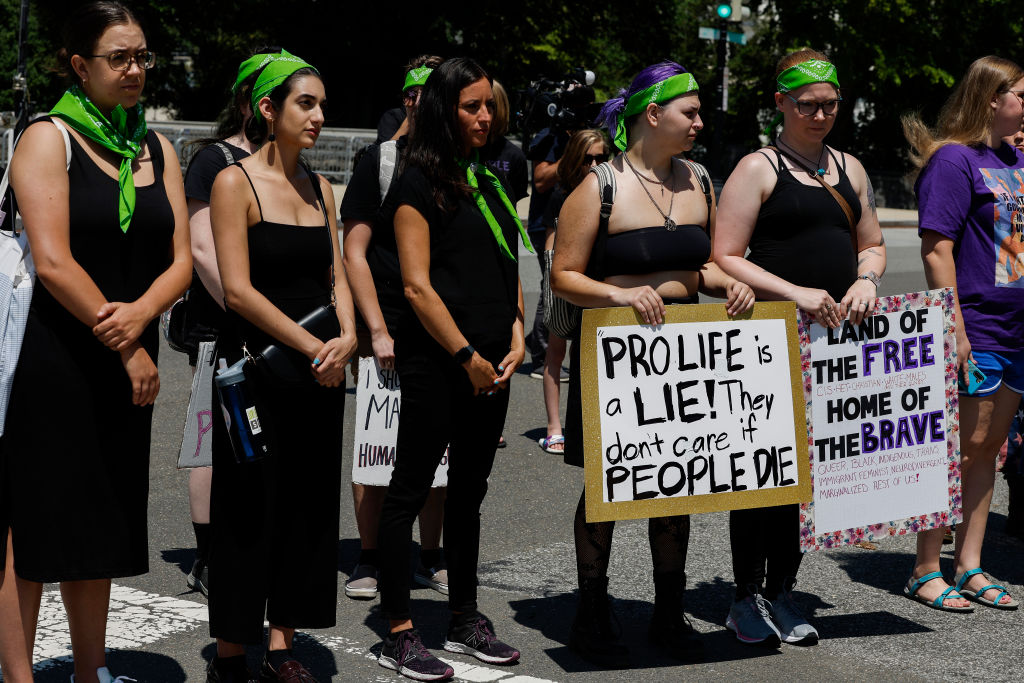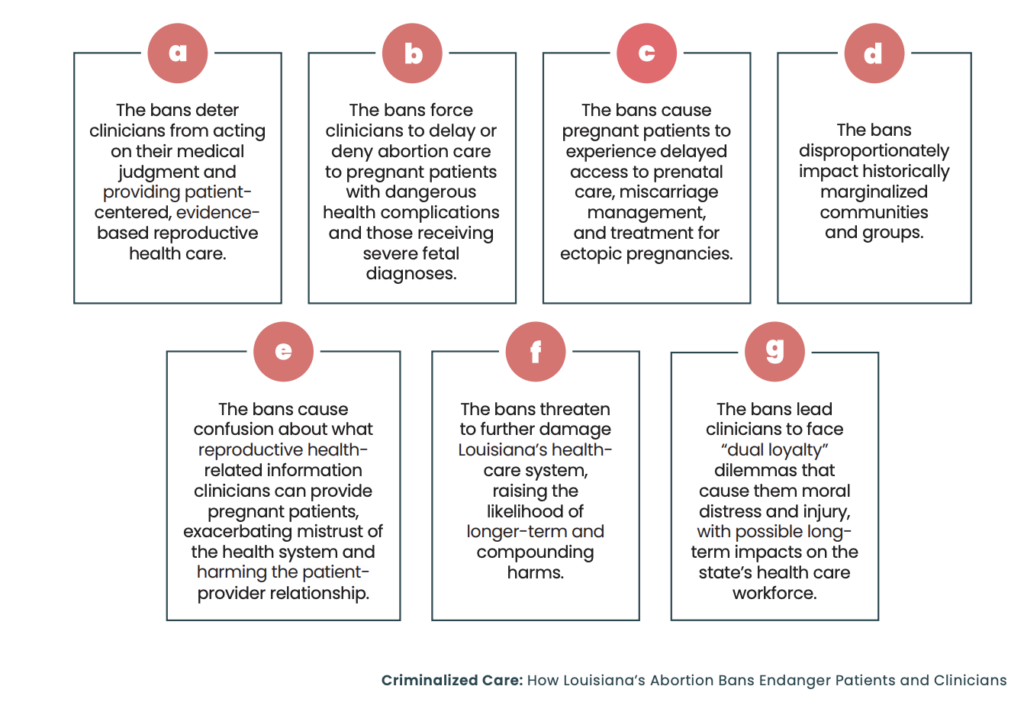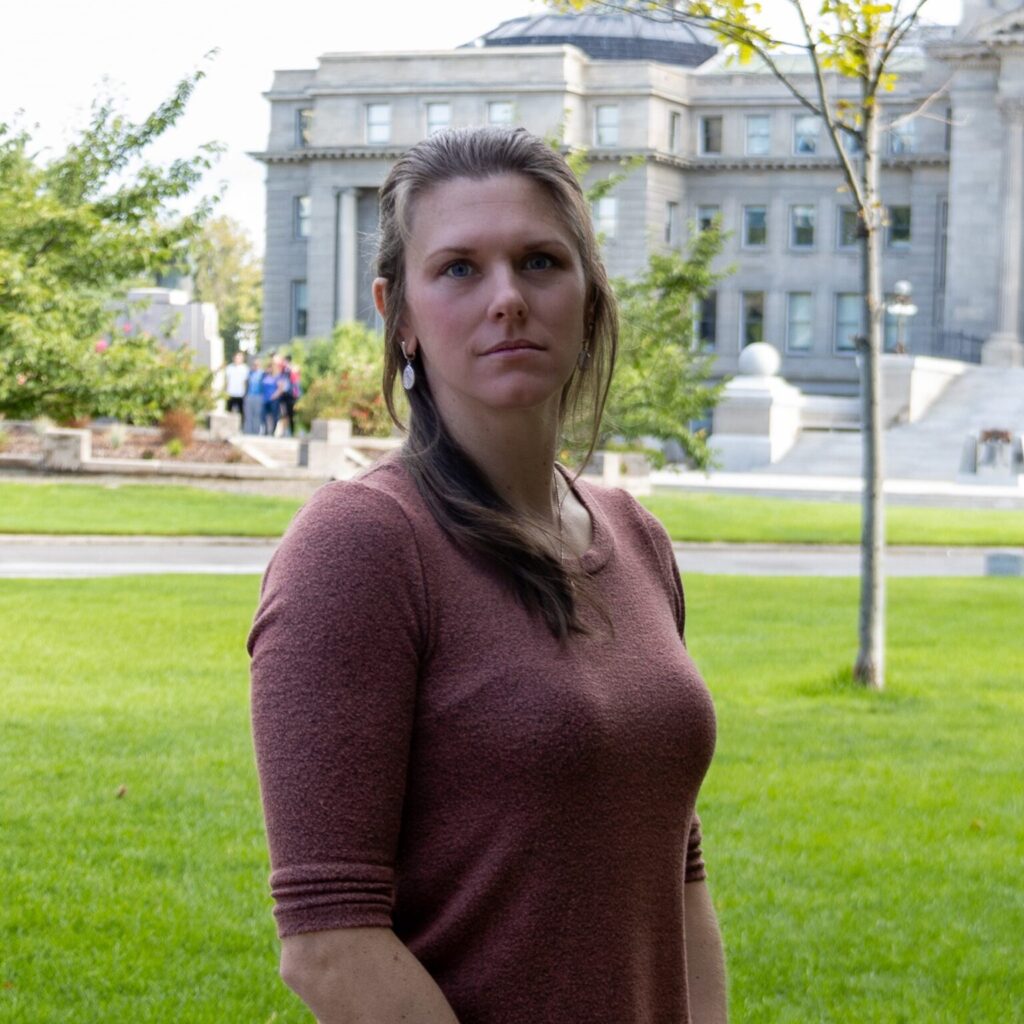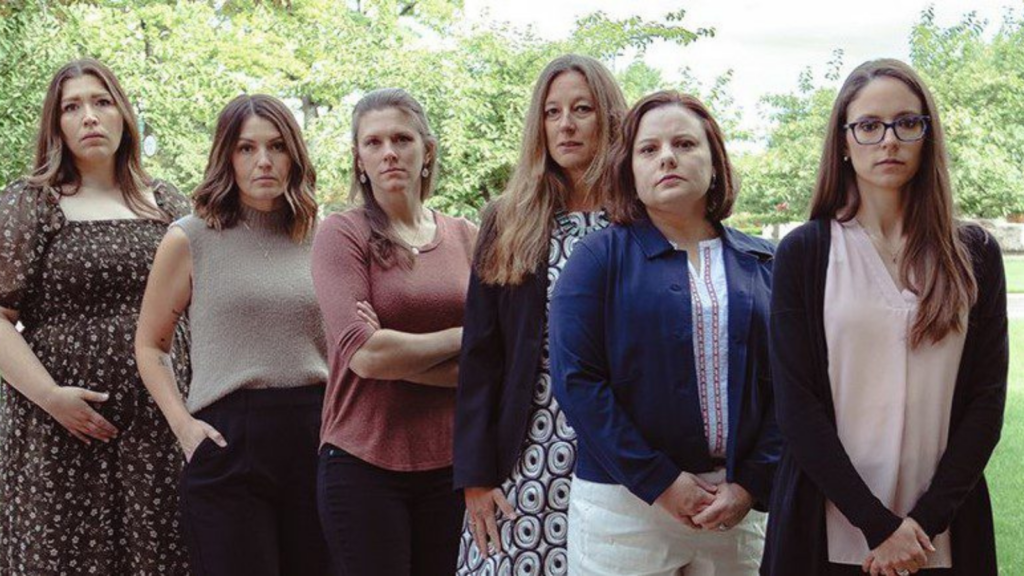Reproductive rights and authorized advocates are gathering tales from over 100 girls who nearly died—and a minimum of one who did—after being denied emergency abortion care.

On April 24, the USA Supreme Court docket will hear oral arguments in two circumstances, Idaho v. United States and Moyle v. United States, about whether or not states can prohibit medical doctors from treating girls with life-threatening pregnancies till a affected person’s situation deteriorates to the purpose the place they’re about to die.
The Nationwide Girls’s Regulation Middle (NWLC) filed an amicus temporary in these circumstances describing a number of of the greater than 70 documented circumstances of girls nearly dying—and a minimum of one who did die—once they had been denied emergency medical care due to abortion bans enacted throughout the nation after the Supreme Court docket overturned Roe v. Wade in June 2022. And “the true variety of circumstances is probably going considerably increased,” in accordance the NWLC temporary.
In these circumstances, the Division of Justice (DOJ) is difficult Idaho’s “Protection of Life Act,” which prohibits abortions except crucial to save lots of the lifetime of the mom. The DOJ is arguing that Idaho’s legislation violates the federal Emergency Medical Remedy and Labor Act (EMTALA), which requires Medicaid-funded hospitals to supply medically crucial stabilizing remedy to sufferers, together with being pregnant termination, no matter state legal guidelines limiting or banning abortion. The DOJ argues medical doctors violate federal legislation in the event that they wait till a affected person’s situation deteriorates to the purpose the place they’re about to die earlier than medical doctors present the mandatory care to stabilize them.
Federal legislation requires federally funded hospitals to supply “crucial stabilizing remedy” to any affected person with an emergency medical situation that, within the absence of medical consideration, may fairly be anticipated to end in placing a affected person’s well being in severe jeopardy, together with “severe impairment of bodily features or severe dysfunction of any bodily organ or half.”
The Idaho legislation prohibits remedy till a lady is on the point of dying, with out regard to the impacts on her well being in any other case.
“It’s not innocent to attend till the brink of dying to intervene in emergency medication,” stated emergency room doctor Dr. Dara Kass at Columbia College Medical Middle. “Having to attend till that window to intervene is harmful for folks… [and] can have penalties to your life and future fertility and organs and a whole lot of different issues.”
NWLC Temporary: Harrowing Tales of Denied Emergency Medical Care
The Nationwide Girls’s Regulation Middle temporary detailed the excruciating tales of a number of pregnant girls denied emergency medical care, demonstrating the harms of such denials.
One concerned a lady experiencing preterm untimely rupture of membranes (PPROM), which is when the amniotic sac or “water” breaks previous to 37 weeks. PPROM complicates 2 to 4 % of all singleton pregnancies and seven to twenty % of dual pregnancies, and impacts 150,000 girls within the U.S. yearly. In states banning abortion, girls experiencing PPROM face life-threatening risks.
The NWLC temporary outlined:
One affected person skilled PPROM earlier than her fetus was viable. The stabilizing remedy for pre-viable PPROM could also be terminating a affected person’s being pregnant, both by way of an induction of labor or a dilation and evacuation (D&E)—a routine process. However this affected person was despatched house with out that care. She returned to the emergency room two days later with extreme sepsis and bacteremia.
Her pre-viable fetus was delivered, however clinicians couldn’t ship her placenta. Ultimately, a doctor carried out a D&E, however in contrast to wholesome sufferers, this lady bled “from in all places.” The affected person miraculously lived, however after her gut-wrenching expertise, the priority she expressed to her physician was whether or not her extreme an infection “depend[ed] as life-threatening,” or whether or not she and her physician would “go to jail” for the process that saved her life.
One other story concerned hospital anesthesiologists, who refused to supply an epidural to a lady in early labor as a result of he feared prison prosecution:
One other affected person in an abortion ban state sought remedy for a dilated cervix, by way of which her amniotic sac was protruding, when she was 19 to twenty weeks pregnant. She was despatched house.
The next day, she got here to the emergency division in extreme ache and superior labor. Whereas EMTALA requires stabilizing remedy for ache and stabilizing care throughout labor, the hospital’s anesthesiologists refused to supply an epidural.
Because the affected person’s doctor described:
“[The anesthesiologists] believed that offering an epidural might be thought of [a crime] below the brand new [state] legislation. The affected person acquired some IV morphine as an alternative and delivered a couple of hours later however was very uncomfortable by way of the rest of her labor. … I overheard the first supplier say to a nurse that a lot as providing a serving to hand to a affected person getting onto the gurney whereas within the throes of a miscarriage might be construed as ‘aiding and abetting an abortion.’ Greatest to not a lot as contact the affected person who’s miscarrying…”
Denial of emergency care not solely endangers the lives and well being of pregnant girls, however may cause devastating monetary impacts—together with the prices of touring out of state to acquire emergency remedy, lack of insurance coverage protection for out-of-state care, and absence from work, which might endanger employment standing.
These impacts are notably burdensome to low-income sufferers and their households:
Mylissa Farmer was denied the emergency abortion care she wanted, first by her native hospital in Missouri, after which by a hospital in Kansas. After diagnosing her with PPROM, medical doctors at each hospitals informed Mylissa her fetus couldn’t survive, and persevering with her being pregnant would put her vulnerable to severe an infection, hemorrhaging, the lack of her uterus, and even dying.
Nonetheless, each hospitals refused to finish the being pregnant, in violation of EMTALA. Along with her well being deteriorating quickly, Mylissa and her boyfriend drove greater than 4 hours to an Illinois abortion clinic whereas she was in labor.
The medical and monetary penalties of crisscrossing state strains to acquire life-saving abortion care linger to at the present time. Mylissa was docked pay for lacking work and needed to increase funds to pay for the Illinois care that her insurance coverage refused to cowl. Her boyfriend additionally misplaced his job as a result of he was compelled to overlook work over the times he helped her journey. They might not regain regular employment for months.
Yeniifer Alvarez’s Story
Some girls by no means get the care they want. The NWLC temporary particulars the case of 1 younger lady, Yeniifer (Yeni) Alvarez, who died from being pregnant issues after a Catholic hospital in Texas failed to supply stabilizing abortion care.
Yeni lived in an immigrant group in Luling, Texas, the place 65 % of residents lack medical health insurance—Yeni included. She discovered she had hypertension and diabetes throughout her being pregnant, and developed pulmonary edema on the peak of the COVID-19 pandemic. As a result of she was uninsured, she was unable to afford the care and medicines wanted. As her situation deteriorated, she went to the emergency room a number of occasions, however medical doctors didn’t provide abortion care.
Specialists agree that Yeni’s dying seemingly may have been prevented with an abortion, however hospital data present that, regardless of a number of emergency room visits (together with one the place she was struggling to breathe), healthcare suppliers by no means supplied to finish her being pregnant.
Yeni’s dying represents what the dearth of entry to healthcare can imply for a pregnant particular person marginalized by lack of medical health insurance, poverty, and a draconian abortion ban.
As Yeni’s household mourn her preventable dying, her loss has led to severe monetary and familial hardship as a result of Yeni contributed to the mortgage funds and was a frequent caregiver for a cousin and an autistic sibling.
How Abortion Bans Hurt Reproductive Healthcare Entry Total
Being pregnant in the USA is now 10 occasions extra deadly than in different high-income nations, the Nationwide Girls’s Regulation Middle factors out. Pregnant Indigenous girls die twice as typically as white girls, whereas Black girls die thrice as typically as white girls.
States limiting abortion have a lot increased maternal mortality charges than states with abortion entry. In 2020, restrictive states had a 62 % increased maternal dying charge than different states, and specialists estimate that whole abortion bans at present are inflicting an almost 25 % improve in maternal mortality general.
One third of counties in the USA are “maternity care deserts,” with no obstetric suppliers, hospital-based obstetric care or start facilities. And Dobbs has worsened this dearth of suppliers.
Within the first 15 months after enacting an abortion ban, Idaho—the state on the coronary heart of the EMTALA case in entrance of the Court docket—misplaced 22 % of its practising obstetricians and 55 % of its high-risk obstetricians. Not less than two Idaho hospitals closed their labor and supply items in 2023.
Obstetric suppliers are transferring away from states the place they can’t save their sufferers’ lives and well being with out the looming threats of imprisonment, bankrupting civil penalties and dropping their medical licenses.
“With fewer suppliers, all pregnant folks, particularly Black and Indigenous folks, will undergo life-changing harms, and plenty of will die preventable deaths,” argued the NWLC temporary.
One third of counties in the USA are ‘maternity care deserts,’ with no obstetric suppliers, hospital-based obstetric care or start facilities. And Dobbs has worsened this dearth of suppliers.
Louisiana’s abortion ban is endangering the lives of girls needing emergency medical take care of being pregnant issues, as proven by a latest report, “Criminalized Care: How Louisiana’s Abortion Bans Endanger Sufferers and Clinicians,” by Raise Louisiana, Physicians for Human Rights, RH Impression and the Middle for Reproductive Rights.
It additionally documented how some medical doctors in Louisiana are doing medically pointless and harmful cesarean sections as an alternative of secure abortions as a consequence of fears of violating the legislation.
“The bans’ slim and ill-defined exceptions create confusion, uncertainty and concern for each pregnant sufferers and clinicians, who face important skilled, civil and prison penalties for offering the patient-centered and compassionate care they had been educated for and will legally provide earlier than Roe v. Wade was overturned,” based on the report.

EMTALA and the Want for Clarification
Along with the federal authorities’s makes an attempt to implement EMTALA, the Middle for Reproductive Rights (CRR) has filed lawsuits in Tennessee, Texas, Oklahoma and Idaho asking states to make clear whether or not medical doctors can provide emergency medical care to pregnant sufferers experiencing issues, sharing many harrowing tales of pregnant girls and their medical doctors.
Complicated language and non-medical terminology within the legislation has left medical doctors unsure about when they’re legally in a position to present abortion care with out being prosecuted.
Middle for Reproductive Rights
Within the Tennessee case, Blackmon v. Tennessee, the Middle for Reproductive Rights is asking a court docket to make clear what circumstances qualify below the “medical emergency” exception in Tennessee’s abortion ban. CRR filed the case on behalf of 9 plaintiffs: seven Tennessee girls denied medically crucial abortion care who confronted extreme and harmful being pregnant issues, and two Tennessee physicians who’ve been prevented from providing their sufferers the medically indicated remedy throughout obstetrical emergencies.

“Complicated language and non-medical terminology within the legislation has left medical doctors unsure about when they’re legally in a position to present abortion care with out being prosecuted,” argued CRR.
Docs within the state face lack of licensure and as much as 15 years in jail for violating the legislation, whereas the legislation forces pregnant girls to both wait till they’re close to dying to obtain care or flee the state if they’ve the means to take action.
The Middle for Reproductive Rights Takes on Tennessee’s Abortion Ban
The next tales, excerpted from The Middle for Reproductive Rights, are a number of the tales from pregnant girls in Tennessee whose lives had been put in danger as a consequence of delayed or denied abortion care.
Nicole Blackmon

Nicole Blackmon found she was pregnant simply months after the homicide of her teenage son. However at 15 weeks, her child was identified with a situation that made it unlikely her child would survive the being pregnant. Along with affected by melancholy and anxiousness, Nicole had well being circumstances that put her at excessive threat of getting a stroke throughout labor and supply. With out assets to journey to a different state for an abortion, Nicole was compelled to proceed the being pregnant in opposition to her will till, at 31 weeks, she gave start to a stillborn child.
Allie Phillips

Allie Phillips was 18 weeks pregnant when she discovered that her child had a number of fetal diagnoses that made it unlikely her child would survive the being pregnant, together with a congenital situation of the mind. The continuation of the being pregnant posed dangers to Allie’s personal well being. Allie was in a position to increase the funds to journey to New York Metropolis, the place she discovered her child had already died in utero, leaving her at a excessive threat of an infection and blood clots. She was in a position to obtain the abortion care she wanted in New York.
Katy Dulong
Katy Dulong was identified with cervical insufficiency early in her second trimester and informed that she would inevitably lose the being pregnant. Although she requested to obtain abortion treatment to expel the being pregnant, she was as an alternative despatched house. Katy didn’t obtain the abortion care she wanted till 10 days later—when her cervix was totally dilated, all amniotic fluid had drained, and many of the fetus’ physique was in her vaginal canal. Katy’s medical doctors informed her she was extraordinarily fortunate to have survived; with out the abortion treatment, she may have died inside days.
Rebecca Milner
Rebecca Milner was 20 weeks pregnant when she discovered she had suffered pre-term untimely rupture of membranes (PPROM) and her child was unlikely to outlive. Persevering with the being pregnant put her vulnerable to doubtlessly life-threatening an infection. She was in a position to journey to Virginia to acquire the abortion she wanted. Nonetheless, Rebecca nonetheless developed an an infection that medical doctors stated resulted from the delay in abortion care and wanted emergency remedy for sepsis when she returned to Tennessee.
Rachel Fulton
Rachel Fulton discovered from an ultrasound that her child confirmed insufficient fetal improvement of the nervous system, decrease backbone, lungs, stomach, ft, and palms, in addition to fluid buildup in tissues and organs. The being pregnant was unlikely to outlive to start or long gone start, and persevering with the being pregnant put Rachel vulnerable to creating mirror syndrome, a life-threatening complication. Rachel’s grandmother had died in childbirth, a tragedy that had a lifelong impact on Rachel’s father and his siblings. To safeguard her well being and spare her household from such tragedy, she drove together with her husband to Illinois to acquire abortion care.
Monica Kelly
Monica Kelly was 12 weeks pregnant when her physician informed her that her being pregnant had Trisomy 13, a extreme fetal situation, and was unlikely to outlive to start or would die shortly after start. Monica’s physician warned her that persevering with the being pregnant would put her in danger for preeclampsia and an infection, amongst different circumstances. Monica traveled to Florida to obtain the abortion care she wanted.
Kathryn Archer
Kathryn Archer was 20 weeks pregnant when she discovered that a number of extreme fetal circumstances, together with irregular mind improvement and improperly developed organs, made it unlikely that her being pregnant would survive to start. After struggling to seek out an appointment out of state, Kathryn obtained abortion care in Washington, D.C.
Middle for Reproductive Rights Intervene on Behalf of Idaho Girls
CRR’s Idaho plaintiffs have equally harrowing tales of near-death experiences whereas pregnant.
Jennifer Adkins

Lead plaintiff within the case Jennifer Adkins, of Caldwell, was pregnant together with her second little one when her 12-week ultrasound revealed her child had pores and skin edema and cystic hygroma, each of which carry a excessive mortality charge. Throughout the identical appointment, a geneticist informed Jennifer that her daughter was additionally prone to have Turner syndrome, a uncommon chromosomal situation that impacts feminine fetuses and outcomes when one of many X chromosomes is lacking. Docs informed Jen her being pregnant was seemingly not viable, as Turner syndrome nearly all the time ends in miscarriage. Additionally they stated that if she didn’t miscarry, Jen was prone to develop mirror syndrome—a situation resulting in the event of edema and preeclampsia which, if left untreated, might be deadly.
Although Jennifer was devastated by the information, it was clear to her that persevering with the being pregnant would endanger her well being. Conscious of Idaho’s abortion ban, she questioned her medical doctors, who admitted that if the state’s legal guidelines had been completely different, they’d have referred her to an in-state abortion clinic. However due to Idaho’s abortion legal guidelines, she would as an alternative must journey outdoors Idaho to get the care she wanted. After calling a number of clinics in neighboring states, Jen was in a position to journey together with her husband to Portland, Oregon, to acquire abortion care—however solely after receiving monetary help from two abortion funds. Later, Jen was in a position to get her fetal tissue examined, and the prognosis of Turner syndrome was confirmed.
Whereas Jen hopes to change into pregnant once more, she is anxious about being pregnant in Idaho. She worries that as a result of her hospital has not too long ago misplaced its obstetric genetics counselor and can quickly lose its solely remaining maternal fetal medication (MFM) specialist, she shall be left with little to no in-state choices for genetic counseling and high-risk being pregnant care ought to she want it in future pregnancies.
Kayla Smith

Kayla Smith, previously of Nampa, pregnant together with her second little one, was shocked to study at her 19-week ultrasound scan that her child had a severe and inoperable congenital coronary heart situation. After consulting with a maternal fetal medication (MFM) specialist and a pediatric heart specialist, she and her husband discovered that their child was not prone to survive previous start and there have been no viable medical interventions obtainable. Kayla’s medical doctors additionally defined that as a result of Kayla had beforehand developed preeclampsia throughout her first being pregnant (her daughter is now 3), she had a heightened threat of creating preeclampsia once more if she carried her being pregnant to time period.
Devastated by the information however decided to spare their child from struggling and guarantee Kayla’s security and well being, Kayla and her husband determined that what Kayla wanted was abortion care. However due to Idaho’s abortion bans, her medical doctors couldn’t present that take care of her. Kayla and her household traveled to Washington to acquire abortion care—a visit that value hundreds of {dollars} and required them to take out a private mortgage, in addition to obtain help from family and friends. Worse than the monetary toll, Kayla was upset that she had been compelled by way of such an ordeal simply to acquire crucial medical care.
Kayla is pregnant once more, with a woman—however she and her husband had been so involved about elevating two daughters in a state like Idaho, the place their bodily autonomy rights aren’t assured or protected, that they’ve since moved to Washington.
Rebecca Vincen-Brown

Rebecca Vincen-Brown, of Ada County, was thrilled to be pregnant together with her second little one when she started experiencing vaginal bleeding roughly 12 weeks into her being pregnant. She had a number of ultrasounds and appointments together with her obstetrician-gynecologist (OB-GYN) and MFM as a result of her child was measuring small and low in her uterus. After she underwent two rounds of non-invasive prenatal testing—which had been inconclusive however confirmed a probability of extreme chromosomal circumstances—she went in for an early anatomy scan at 16 weeks and discovered her child had numerous deadly fetal circumstances together with dangling choroid plexus, micrognathia, important cardiac points and horseshoe kidney. Docs informed her the child was unlikely to outlive to start, and if Rebecca had been to proceed her being pregnant, she risked creating preeclampsia or extreme hemorrhaging.
Rebecca wished to stop her child from struggling and stay wholesome and current for her 2-year-old daughter, however her medical doctors weren’t in a position to present her the care she wanted as a result of abortion bans. So she, her husband and their daughter drove for seven hours to Oregon in order that she may get hold of abortion care. After Rebecca had gone to the abortion clinic for the primary day of her abortion process, she handed her being pregnant within the lodge toilet within the early hours of the following morning. Her husband needed to carry out a number of rounds of fundal therapeutic massage on her abdomen to assist cease the bleeding. They each needed to be cautious to not make any noise whereas their daughter slept.
Rebecca is pregnant once more and not too long ago discovered she is carrying a child lady. Whereas completely happy to be pregnant, she is anxious about her well being whereas pregnant in Idaho and is worried about her daughters’ rights and security.
Transferring Forward, Will the Court docket Permit Girls to Die?
As Republican lawmakers and judges impose draconian abortion bans in additional states—together with Florida and Arizona simply final week—increasingly more pregnant girls are struggling and dying, particularly girls of coloration and low-income girls and ladies of coloration.
“We have now by no means seen legislators take a look at the concept of intervening to stop hurt to someone as then restricted in its apply, however not for medical data, not for adjustments in security and efficacy, however solely as a result of laws has determined that that process is simply allowable in sure circumstances,” stated Dr. Dara Kass.
Will the Supreme Court docket enable girls to die?
Learn Extra, Tune in to Oral Arguments and Get Concerned
Oral arguments in Moyle v. United States are on Wednesday, April 24, at 10 a.m. ET. Hearken to the arguments right here or right here. That very same day, NWLC shall be main a rally in entrance of the Supreme Court docket from 9 a.m. to midday.
For extra Dobbs survivor tales, go to the web site of the Middle for Reproductive Rights, together with Voices from Abortion Ban States and tales of the plaintiffs in Zurawski v. Texas, Cox v. Texas, and the Idaho, Tennessee and Oklahoma circumstances. Right here’s a CRR press convention with sufferers talking out. CRR options the tales of plaintiffs in circumstances in opposition to Idaho, Tennessee and Oklahoma right here.
The Middle for American Progress has a supplier storyteller sequence, that includes 4 medical professionals from Idaho and different rural states testifying about how the criminalization of abortion care and the interference of the Supreme Court docket of their each day medical apply has modified their private {and professional} lives.
The Ms. sequence “Our Abortion Tales” additionally chronicles readers’ experiences of abortion pre- and post-Roe. Share your abortion story by emailing myabortionstory@msmagazine.com.
Up next:
U.S. democracy is at a harmful inflection level—from the demise of abortion rights, to a scarcity of pay fairness and parental go away, to skyrocketing maternal mortality, and assaults on trans well being. Left unchecked, these crises will result in wider gaps in political participation and illustration. For 50 years, Ms. has been forging feminist journalism—reporting, rebelling and truth-telling from the front-lines, championing the Equal Rights Modification, and centering the tales of these most impacted. With all that’s at stake for equality, we’re redoubling our dedication for the following 50 years. In flip, we’d like your assist, Assist Ms. at present with a donation—any quantity that’s significant to you. For as little as $5 every month, you’ll obtain the print journal together with our e-newsletters, motion alerts, and invites to Ms. Studios occasions and podcasts. We’re grateful on your loyalty and ferocity.


